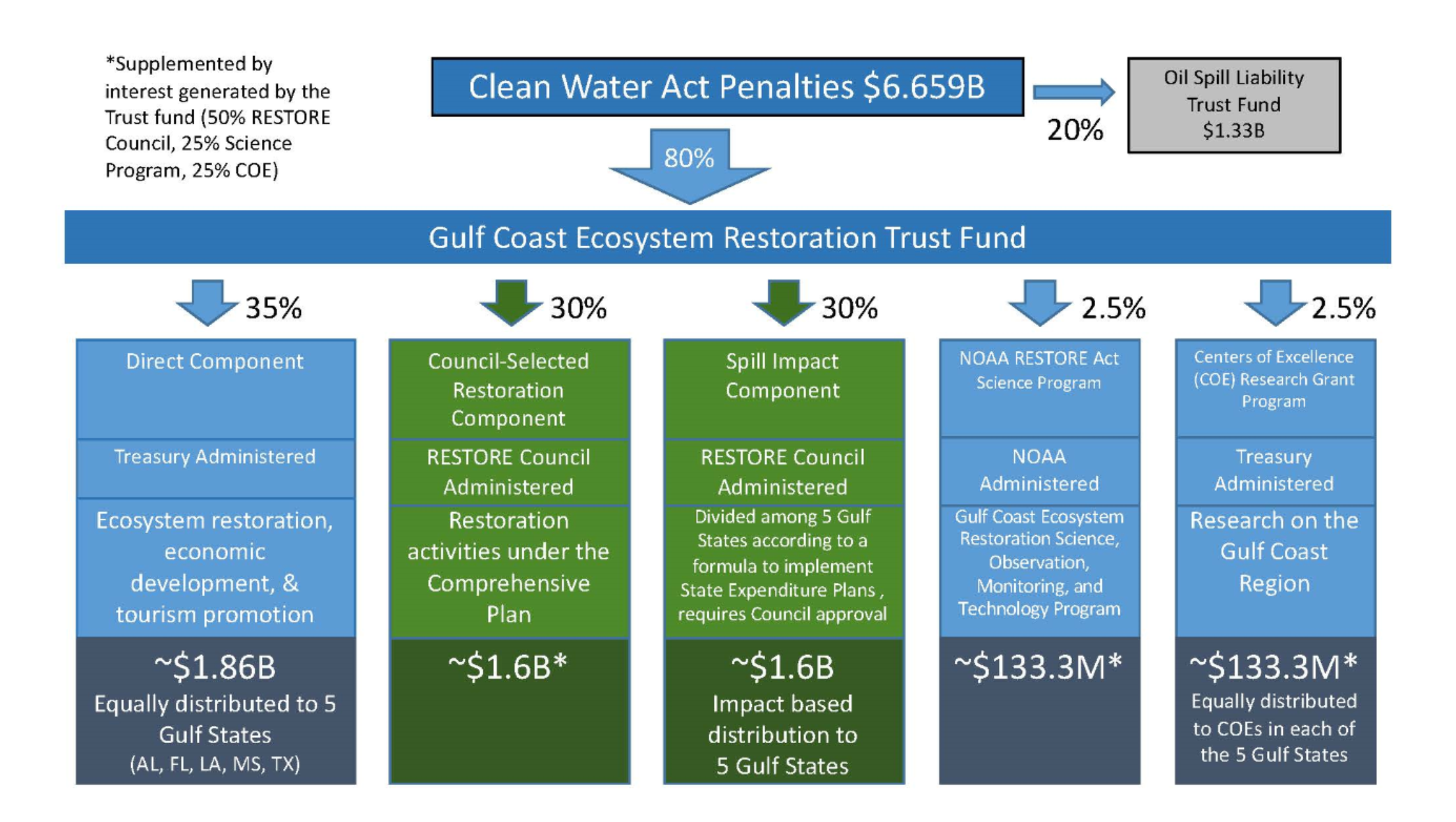In July 2012, the Resources and Ecosystems Sustainability, Tourist Opportunities, and Revived Economies of the Gulf Coast States Act (RESTORE Act) established the Gulf Coast Ecosystem Restoration Council (Council). The RESTORE Act dedicates 80 percent of all administrative and civil penalties related to the Deepwater Horizon spill to a Gulf Coast Restoration Trust Fund (Trust Fund) and outlines a structure by which the funds can be utilized to restore and protect the natural resources, ecosystems, fisheries, marine and wildlife habitats, beaches, coastal wetlands, and economy of the Gulf Coast region. The U.S. Department of the Treasury is responsible for issuing compliance and auditing procedures for the entire Act and procedures for two grant programs administered by Treasury. Learn more about Treasury's role.

Figure 1. Allocation of the Gulf Coast Restoration Trust Fund based on settlements with BP, Transocean, and Anadarko.
The Council has oversight of the expenditure of 60 percent of the funds made available from the Trust Fund (Figure 1). Under the Council-Selected Restoration Component, 30 percent of the available funding is administered for Gulf-wide ecosystem restoration and protection according to the Initial Comprehensive Plan developed by the Council and approved in August 2013. The remaining 30 percent is allocated to the states under the Spill Impact Component, according to the formula and regulation approved by the Council in December 2015 and spent according to individual State Expenditure Plans (SEPs) which contribute to the overall economic and ecological recovery of the Gulf. The SEPs must adhere to four basic criteria set forth in the RESTORE Act and are subject to approval by the Council chair. The remaining funds are allocated as follows (see Figure 1):
- 35 percent to the Direct Component, which is divided equally among the five Gulf states for ecological and economic restoration;
- 2.5 percent to National Oceanic and Atmospheric Administration (NOAA) Science Component (plus 25 percent interest earned) dedicated to the Gulf Coast Ecosystem Restoration Science, Observation, Monitoring, and Technology Program; and
- 2.5 percent to a Centers of Excellence Component (plus 25 percent of interest earned) dedicated to the Centers of Excellence Research Grants Program.
To date five Centers of Excellence have been established.
Learn more about:
- Comprehensive Plan Update 2022: Restoring the Gulf Coast’s Ecosystem and Economy
- Council Members
- Receiving RESTORE Council email updates
